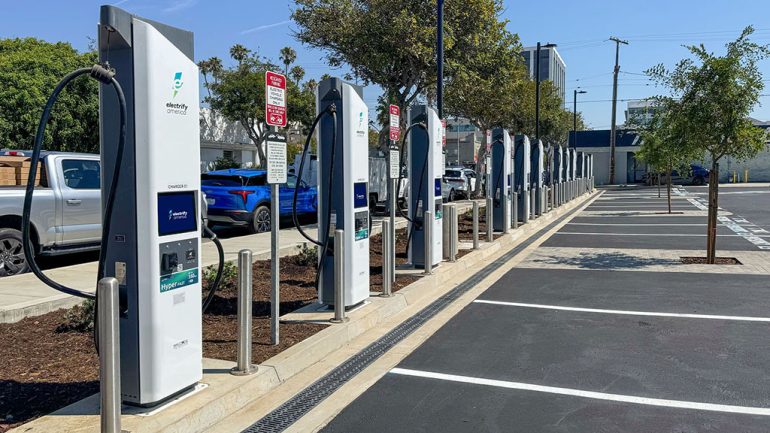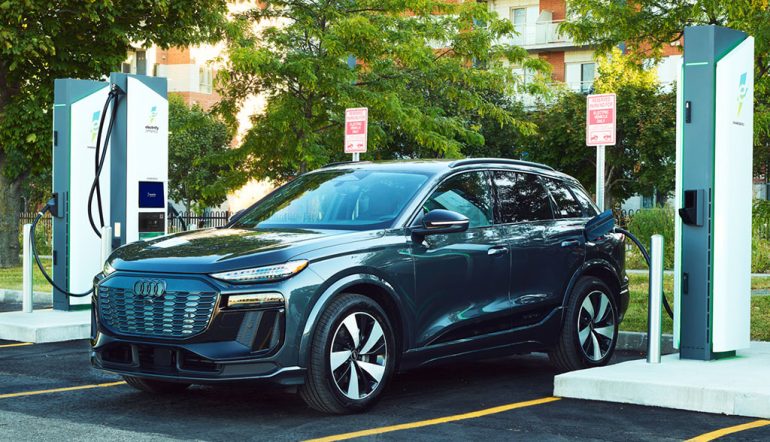Federal EV Charging Funds Are Coming Back but With Fewer Protections and New Delays : Automotive Addicts

Automotive

It feels a bit like whiplash. One moment, electric vehicles and their charging networks are back in play. The next, federal policy is shifting again and leaving the future of EV infrastructure hanging in the balance.
Thanks to a federal court order, the administration has been forced to unfreeze a previously canceled $5 billion in charging infrastructure funding. This funding, part of the National Electric Vehicle Infrastructure (NEVI) program, had been shelved in a sweeping move that threw state plans into uncertainty. Now that the money is back on the table, the Department of Transportation has introduced new rules that change the game for how this funding will be used.
These updated guidelines eliminate many of the original requirements put in place to ensure charger accessibility and equity. Gone are mandates that chargers allow non-app payments, considerations for how stations interact with the electric grid, and any need for community engagement from rural areas or underserved regions. The plan also no longer includes support for small business participation or services like snow removal at charging stations.
The administration is pitching these changes as a way to accelerate approvals and cut red tape. The updated approach prioritizes projects where the site owner also operates the chargers, a model that favors existing gas station and truck stop chains. While that might make deployment easier and more familiar for drivers, critics argue that this strategy largely ignores more ambitious goals of building a charging network that reaches everyone, not just those driving on major interstates.
Criticism has already been swift. Environmental groups have pointed out that although the policy claims to reduce red tape, it has instead introduced more than six months of delays by requiring states to resubmit plans they had already completed. These delays are compounded by the loss of state-level input and oversight, which many say were key to ensuring infrastructure was deployed thoughtfully and sustainably.

The broader policy environment is adding more complexity. In a related development, the administration has also signed resolutions that revoke California’s waiver under the Clean Air Act. This move prevents California and other states that follow its regulations from enforcing stricter vehicle emissions standards or mandating EV sales targets. California’s Advanced Clean Cars II program, which aimed to push automakers toward higher EV sales by 2035, is now effectively blocked.
For automakers and large dealer networks, these changes might appear to offer relief by reducing regulatory pressure. But for clean transportation advocates and state policymakers, the shifts represent a significant retreat from a previously coordinated federal-state approach to electrification.
Even with the NEVI funds being unfrozen, there is a risk that the revised policy could create more fragmentation. Without clear national standards or robust support for equitable deployment, charging infrastructure could cluster in profitable areas while leaving other communities behind. The lack of focus on grid readiness, long-term reliability, and consumer protections could also introduce problems down the line as more drivers transition to electric vehicles.
This moment marks a critical juncture. While the revival of federal EV charging funds provides an opportunity to make progress, the new rules threaten to undermine the long-term goals of a cleaner and more accessible transportation future. States now face the challenge of navigating a faster, but far less predictable, path forward.
As the legal and political battles continue to play out, the EV world is entering a new phase. One where infrastructure expansion may speed up, but the vision behind that growth is changing rapidly. The decisions made now will shape how far and how fairly the electric vehicle transition goes.
FOLLOW US TODAY:

Mike Floyd is a finance executive by trade and a car enthusiast at heart. As a CFO with a keen eye for detail and strategy, Mike brings his analytical mindset to the automotive world, uncovering fresh insights and unique perspectives that go beyond the surface. His passion for cars—especially his favorite, the Porsche 911, fuels his contributions to Automotive Addicts, where he blends a love for performance and design with his professional precision. Whether he’s breaking down industry trends or spotlighting emerging innovations, Mike helps keep the site both sharp and forward-thinking.




